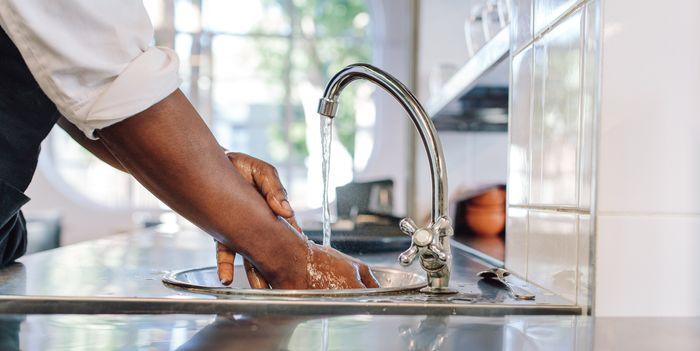
-
Install a pressure booster
One of the best ways to improve water pressure at home is by installing a pressure booster. This technique is highly recommended, especially if you rely on a municipal water supply that has low pressure. As its name suggests, a pressure booster is a device designed to help increase water pressure. This device acts as an intermediary between the source of water and endpoints like showers, faucets, taps, and much more. It pressurizes water from the source to ensure that the endpoint gets water with the desired pressure. If you have not been able to enjoy a hot or cold shower because your municipal water supply has low pressure, then a water booster can come in handy.
-
Adjust the pressure-reducing valve
Another great way to improve water pressure at home is by adjusting the pressure-reducing valve, which is located on the main water supply pipe just next to the meter. So, look for the pressure-reducing valve on the main pipe close to the main water supply pipe that enters your house and adjust it to see if water pressure will increase. Use a pressure gauge to measure the water pressure when adjusting the pressure-reducing valve until the water pressure is at 50 PSI. Once you hit this pressure, secure the locknut by tightening the valve.
-
Replace leaking pipes
One of the main culprits when it comes to reduced water pressure in your home is leaking water pipes. If your pipes are leaking a lot of water your home water pressure will definitely reduce. Any form of water leak in your home, be it big or small will lead to reduced water pressure. That is why it is important to ensure that all water pipes in your home are in perfect condition.
The best way to know if you have leaking water pipes in your home is by conducting a thorough inspection of all pipes in your home. Check for signs of corrosion and moisture building. Water leaks are more likely to affect galvanized steel pipes because they are more susceptible to corrosion. Copper and plastic pipes on the other hand are more resistant to leaks. If you don’t have the capacity to identify leaks in your home, hire a reputable plumber to help you identify pipes leaks.
Replace all leaking pipes with new ones that are stronger and resistant to damage. While replacing old leaking piles may be costly compared to repairing the old pipes, it is worth the cost because they will last for a long time thus reducing the risk of future pipe leak repairs. New pipes will also reduce the risk of water contamination. It is very hard for water to move through a leaking pipe. So, ensure that you replace all leaking pipes to improve water pressure in your home.
-
Remove sediment build-up on your pipe
Water pipes usually get clogged with sediments and mineral deposits over time which affects the flow of water and thus reducing water pressure. This is most common in homes that rely on hard water. Mineral deposits usually happen gradually, meaning that your water pressure will decrease progressively.
Mineral buildup can occur anywhere in the pipe, so it is important to hire an expert to help you identify the exact location in the pipe where mineral deposits have built up. Some of the areas where mineral buildup is likely to occur include the faucet and showerheads. One of the best ways to determine if low water pressure is caused by clogged showerheads or faucets is by conducting a water flow test. Remove the faucet or showerhead and perform a water flow test to check if the pressure is the same or not. If not, perform necessary changes to boost water pressure, including cleaning the faucet with vinegar to get rid of mineral build-up.
Should I increase water pressure on my own or should I hire a professional plumber?
Now that we have provided solutions on how to improve water pressure in your home, you may be wondering whether you should hire a professional plumber to do the job for you or do it on your own. The choice that you make depends on many factors, including the complexity of the problem, the skills needed to fix the problem, and much more.
For instance, if low pressure is caused by mineral build-up on the faucet or tap, then that is a simple problem that you can fix on your own by replacing the showerhead or faucet with a new one that will allow free flow of water.
On the other hand, if the cause of low water pressure in a home is complex and requires more expertise and experience, then you should call an expert to come and fix the problem for you. An expert will identify the root cause of the problem and offer a solution that will increase water pressure in your home. For instance, if the plumber establishes that the low water pressure in your home can only be fixed by installing a pressure booster, he will recommend the best pressure booster to install and will also do the job to ensure that your home water pressure is restored. So, the decision on whether to hire a plumber or do the job or not depends on your expertise and the complexity of the task.
